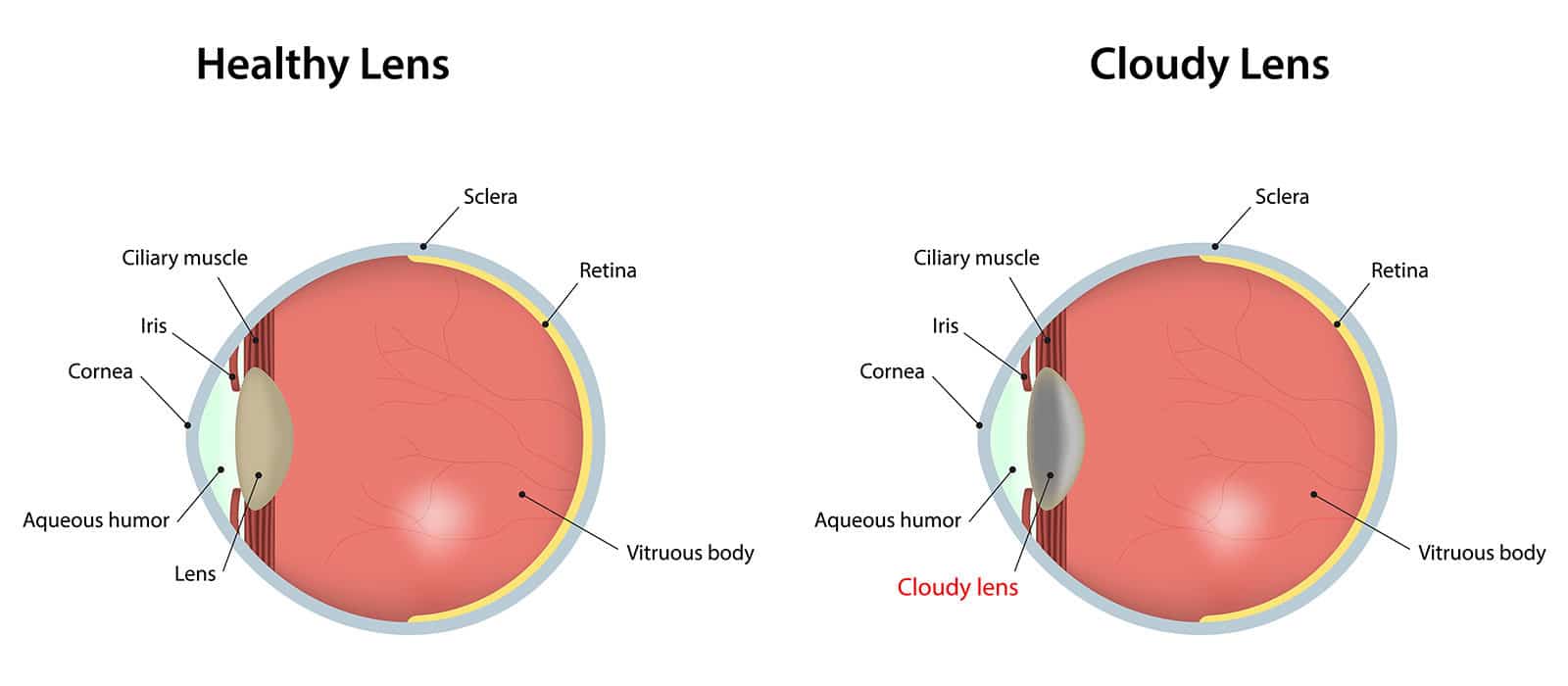What is a Cataract?
Published by on December 24, 2019
As we age, we are likely to develop cloudiness in the lenses of our eyes. The lenses are made mostly of protein, and sometimes protein clumps form cloudy areas, resulting in vision becoming duller or blurrier. Lens discoloration gradually changes vision, adding a yellow or brown tint. This is a cataract, which is also known as DLS stage 3. Cataracts can develop from either a protein clumping or lens discoloration. To determine whether cataracts are causing your vision problems, you will need to schedule a cataract consultation to see a cataract expert for a medical diagnosis. Medical Diagnosis Is Required for Treatment
Medical Diagnosis Is Required for Treatment
As a cataract continues to develop over time, it can greatly affect your everyday vision and can hinder your ability to see while driving. It is chronic and will continue to get worse, which can create a safety concern over time. Having your cataracts removed and treated properly is important for restoring your vision. The best cataract treatment for your eyes can be determined at your Kugler Vision cataract consultation. Your cataract surgeon, Lance Kugler, MD will recommend the treatment needed that will best suit your specific lifestyle and visual needs.
If you are researching cataracts and would like to know whether the vision symptoms you are experiencing may be related to cataracts, take the cataract self-test below.
 Surgery and Healing
Surgery and Healing
Laser cataract surgery is one of the safest and most commonly performed surgical procedures in the United States, with more than 3 million procedures completed each year. Some aspects of traditional cataract surgery are performed along with a computer-guided laser, producing outstanding results with improved safety and precision. Laser cataract surgery is more reliable and delivers consistent and accurate results. Complications after cataract surgery are uncommon and most can be successfully treated.
It is an exciting time for cataract treatment. With today’s technology, options exist that can enable cataract patients to see clearly without glasses or contacts after cataract surgery. These outstanding results are from using advanced intraocular lenses (IOLs) specially designed to deliver clear vision both near and far.
Many patients say they have clear vision in as little as a few hours after cataract surgery. It may take some time for your eye to get used to the advanced IOL that is in place of the removed cataract, causing temporary blurriness and distortion. A one-day post-op appointment is necessary for our doctors to make sure there were no complications, and to see the results from the surgery. The full healing from cataract surgery recovery will take about a month.
Cataract Surgery at Kugler Vision
Discover your cataract surgery options at Kugler Vision in Omaha today. We can help you achieve the clear and natural vision you deserve, so you can enjoy life to the fullest without cataracts. Call us at 402.558.2211 to ask questions or to schedule your cataract consultation to find out which vision solution is right for your eyes.

Lance Kugler, MD, is a specialist in LASIK and vision correction surgery and CEO of Kugler Vision. A proud Omaha native, he is passionate about improving lives through clear vision. Dr. Kugler serves on several national boards, and his practice is recognized internationally as a center of excellence. Dr. Kugler is one of the original founders of the Refractive Surgery Alliance, an international organization comprised of over 350 of the world’s leading vision correction surgeons; he also served as its first president. In 2019, Dr. Kugler was selected as a TEDx speaker, and delivered a talk in Omaha about the worldwide epidemic of nearsightedness and refractive solutions. Dr. Kugler is an Associate Professor of Refractive Surgery at the University of Nebraska Medical Center’s Truhlsen Eye Institute, has been published in many medical journals, and participates in numerous clinical studies to advance the field of vision correction surgery. Additionally, Dr. Kugler is proud to be a Board Certified Fellow of the World College of Refractive Surgery & Visual Sciences. Dr. Kugler and his wife are proud parents to five active kids. When he has a spare moment, he enjoys skiing, tennis, travel, and fine coffee.




Leave a Reply